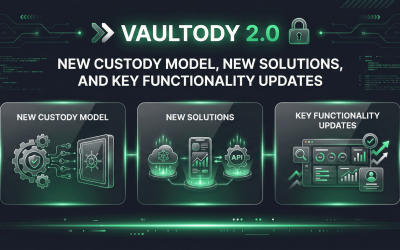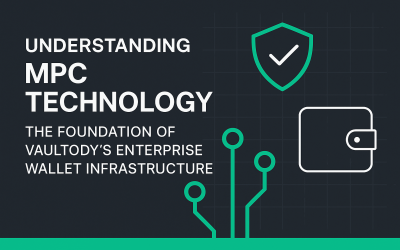The rise of cryptocurrencies has ushered in a new era of investment opportunities, and institutional investors are increasingly entering the space. However, managing institutional crypto portfolios comes with unique challenges, from volatility and security risks to regulatory complexities. To navigate this dynamic landscape, institutions must adopt robust strategies and best practices tailored to the crypto market.
In this comprehensive guide, we’ll explore the essential practices for managing institutional crypto portfolios effectively, ensuring security, compliance, and optimal performance.
1. Risk Management Framework
A solid risk management framework is the backbone of any successful institutional crypto portfolio. The inherent volatility of cryptocurrencies makes it critical to implement strategies that mitigate potential losses while maximizing returns. Key components include:
- Position Sizing and Portfolio Allocation Limits: Define clear limits on how much of the portfolio is allocated to individual assets or asset classes to avoid overexposure.
- Systematic Risk Assessment Protocols: Regularly evaluate market, operational, and liquidity risks to stay ahead of potential threats.
- Counterparty Risk Evaluation: Assess the reliability of exchanges, custodians, and other third-party service providers to minimize exposure to counterparty risks.
- Regular Stress Testing and Scenario Analysis: Simulate extreme market conditions to understand how the portfolio might perform during periods of high volatility or market downturns.
By proactively managing risks, institutions can protect their assets and maintain long-term stability.
2. Custody Solutions
Security is paramount when dealing with digital assets. Unlike traditional assets, cryptocurrencies are prone to hacking and theft, making robust custody solutions a top priority. Consider the following:
- MPC (Multi-Party Computation) Technology: MPC is an advanced cryptographic technique that allows multiple parties to jointly compute a function without revealing their individual inputs. In the context of crypto custody, MPC enables secure key management by distributing key shares among multiple parties, eliminating single points of failure and reducing the risk of unauthorized access.
- Cold Storage Solutions: Store the majority of assets in offline cold storage to protect them from cyber threats.
- Regular Security Audits: Conduct frequent audits of your custody infrastructure to identify and address vulnerabilities.
- Insurance Coverage: Ensure your digital assets are insured against theft, hacking, and other risks.
A secure custody solution not only safeguards assets but also builds trust with stakeholders.
3. Compliance and Regulatory Adherence
The regulatory landscape for cryptocurrencies is still evolving, and institutions must stay ahead of compliance requirements to avoid legal and reputational risks. Key areas to focus on include:
- AML/KYC Requirements: Implement robust anti-money laundering (AML) and know-your-customer (KYC) procedures to prevent illicit activities.
- Tax Reporting Obligations: Stay up-to-date with tax regulations and ensure accurate reporting of crypto transactions.
- Regulatory Frameworks Across Jurisdictions: Understand and comply with the varying regulations in different regions where your portfolio operates, including the Markets in Crypto-Assets (MiCA) regulation within the European Union. MiCA establishes comprehensive rules for crypto-assets and aims to create a harmonized regulatory framework across EU member states. As an EU-licensed provider, Vaultody must comply with MiCA regulations, ensuring transparency, consumer protection, and risk management across its operations.
- Internal Governance Policies: Establish clear internal policies to ensure compliance and accountability across the organization. By prioritizing compliance, institutions can operate with confidence and avoid costly penalties.
By prioritizing compliance, institutions can operate with confidence and avoid costly penalties.
4. Portfolio Rebalancing Strategies
Maintaining an optimal asset allocation is crucial for achieving long-term investment goals. In the volatile crypto market, regular rebalancing ensures that the portfolio remains aligned with its risk tolerance and objectives. Effective strategies include:
- Regular Rebalancing Schedules: Set fixed intervals (e.g., quarterly or annually) to review and adjust the portfolio.
- Dynamic Adjustment Frameworks: Adapt allocations based on market conditions and emerging opportunities.
- Threshold-Based Rebalancing: Trigger rebalancing when asset allocations deviate from predefined thresholds.
- Cost-Effective Execution Strategies: Minimize transaction costs by using efficient trading methods and liquidity providers.
Vaultody can significantly enhance asset management strategies. Automations help businesses receive and organize large numbers of transactions more efficiently, reduce manual intervention, and improve security through predefined rules. Automation tools also ensure adherence to cost-effective execution strategies by minimizing transaction fees, errors and optimizing the overall financial process, plus they require low code integration.
5. Liquidity Management
Liquidity is a critical consideration for institutional crypto portfolios, as the market can experience sudden shifts in trading volumes. To ensure smooth operations, institutions should:
- Establish Multiple Exchange Relationships: Diversify across several exchanges to access deeper liquidity pools.
- Partner with OTC Trading Desks: Use over-the-counter (OTC) desks for large trades to minimize market impact.
- Develop Emergency Liquidity Protocols: Prepare contingency plans to address sudden liquidity shortages.
- Implement Cash Flow Management Strategies: Monitor cash flows to meet operational needs and investment opportunities.
Effective liquidity management ensures that institutions can execute trades efficiently and respond to market changes.
Conclusion
Managing institutional crypto portfolios requires a comprehensive approach that combines robust security measures, regulatory compliance, and sophisticated trading strategies. By implementing the best practices outlined in this guide—ranging from risk management and custody solutions to rebalancing and liquidity management—institutions can navigate the complexities of the crypto market with confidence.
As the crypto landscape continues to evolve, staying informed and adapting to new developments is essential. Partnering with specialized providers, such as Vaultody, can further enhance your portfolio management capabilities, offering tailored solutions to meet institutional needs.
By prioritizing security, compliance, and strategic planning, institutions can unlock the full potential of cryptocurrencies while minimizing risks. Regularly reviewing and updating these practices will ensure continued success in this rapidly changing market.









 Copy link
Copy link